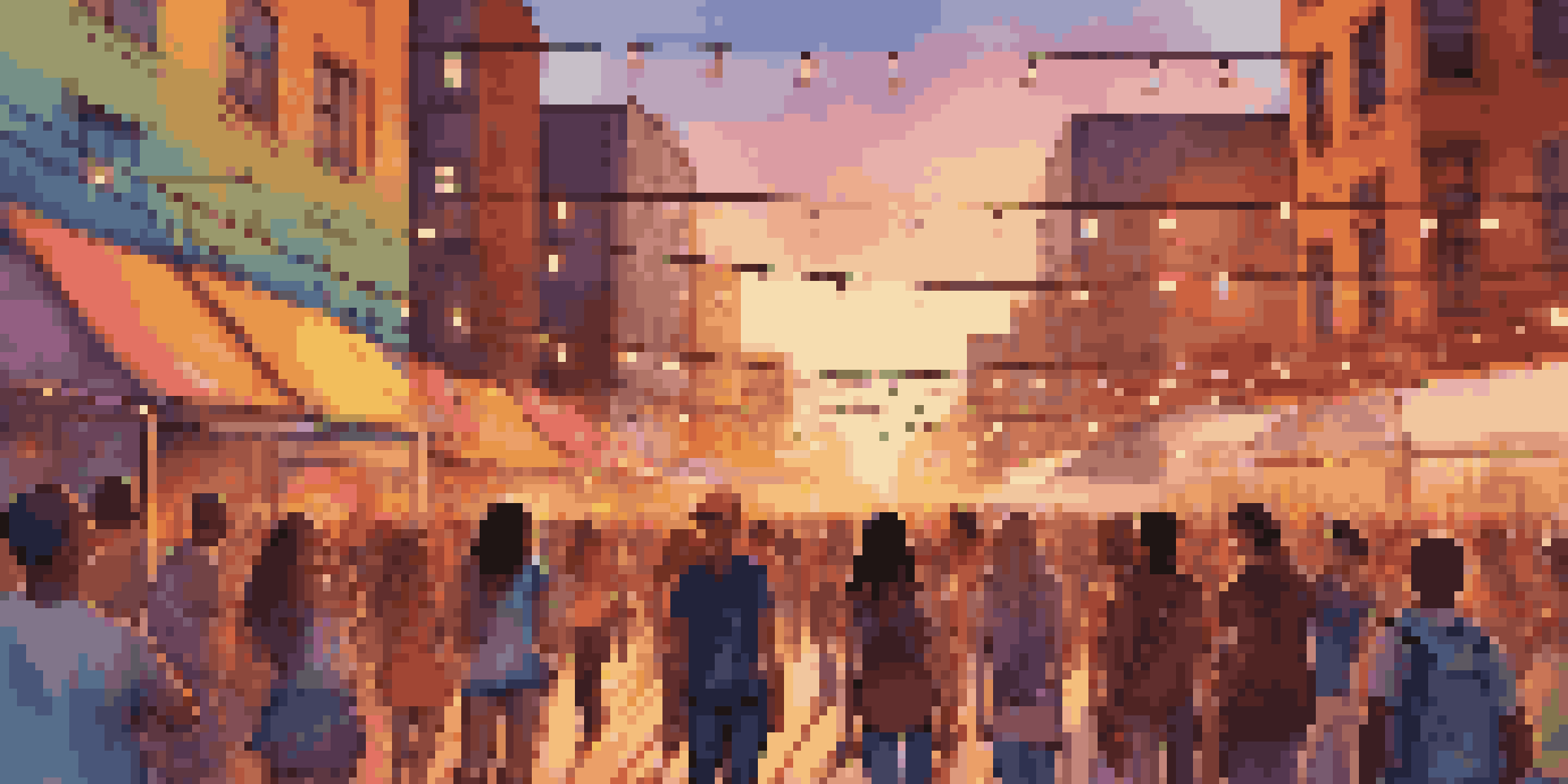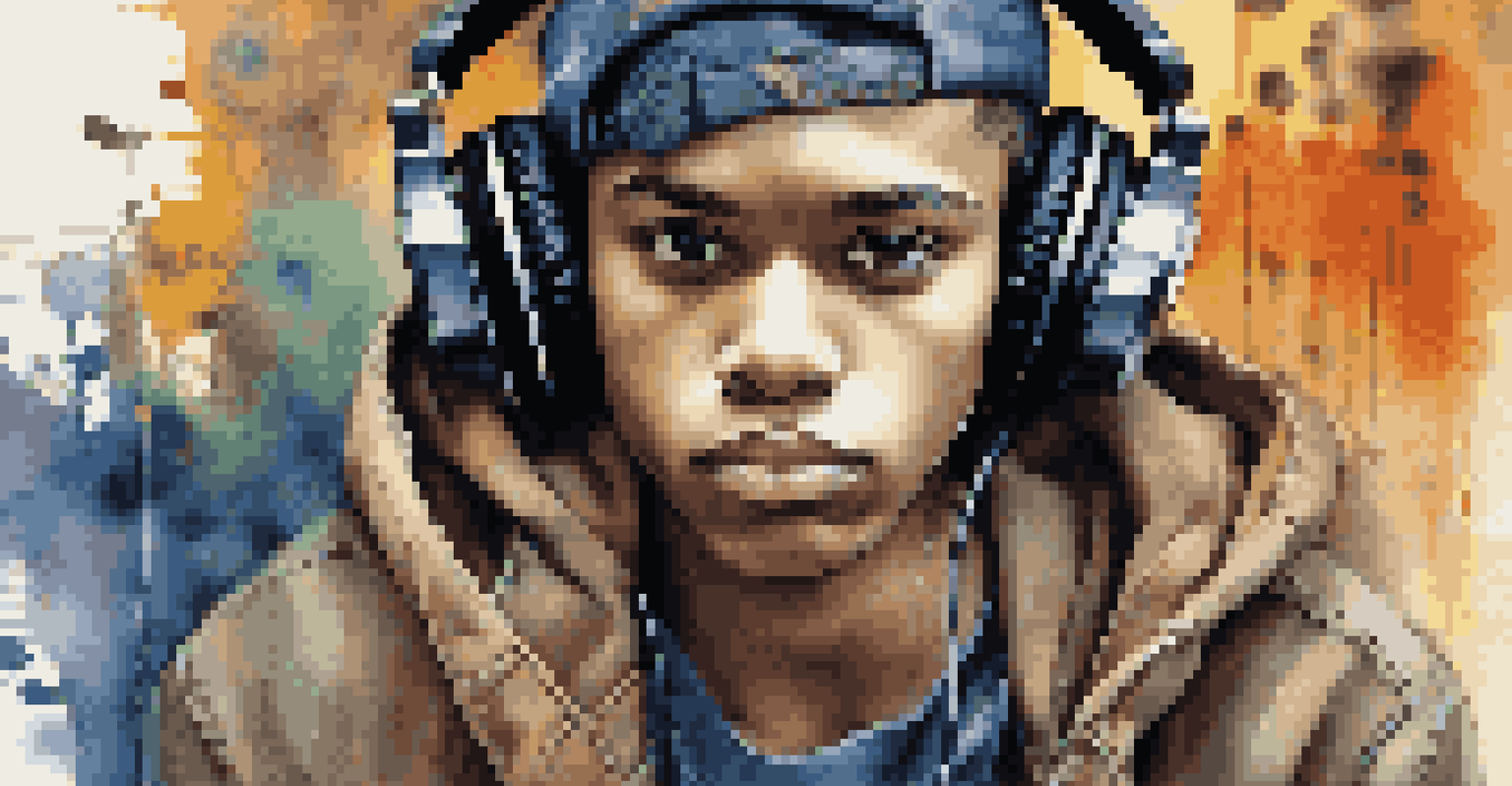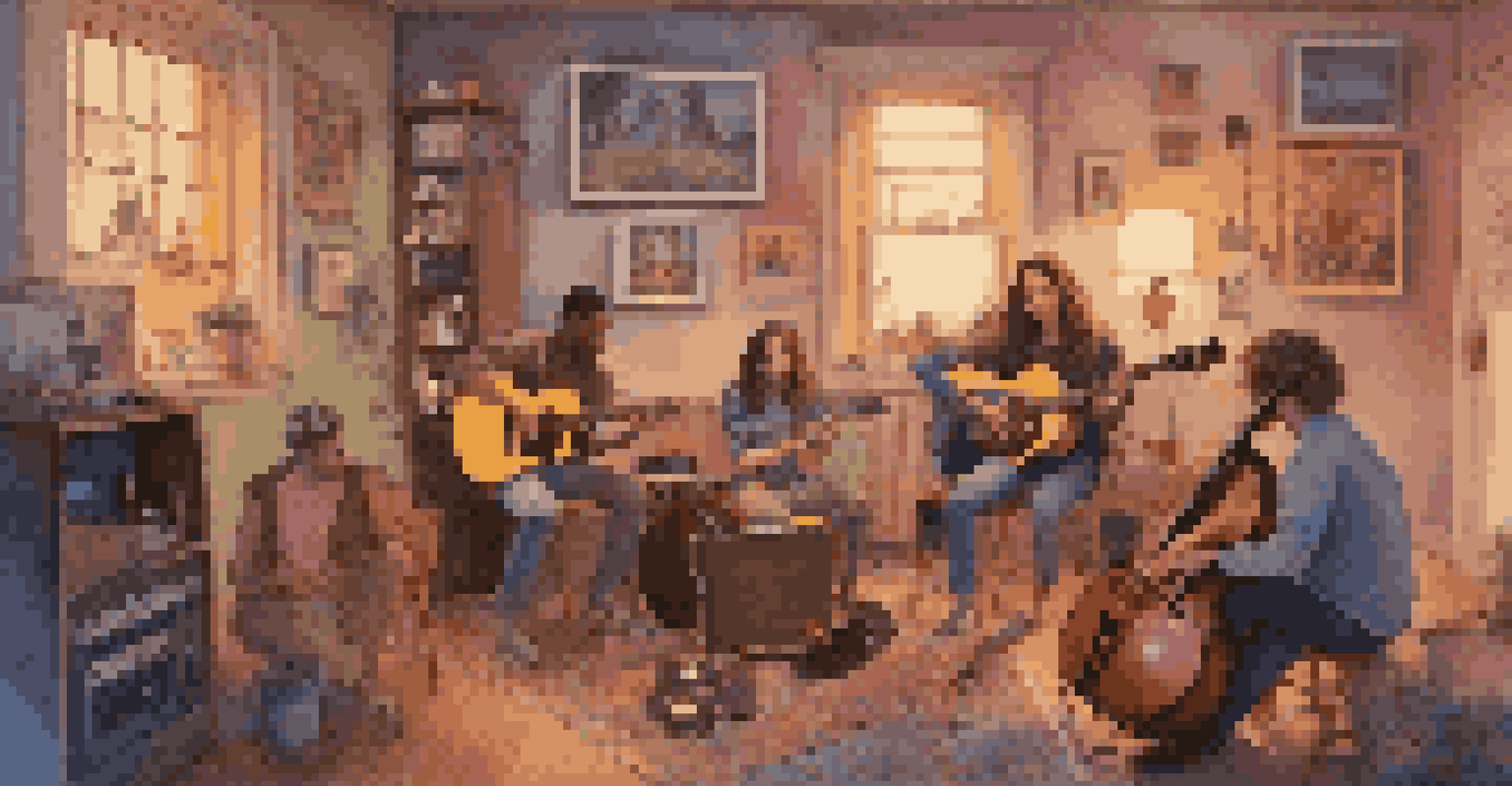The Influence of Music on Urban Youth Culture and Trends

The Role of Music in Shaping Identity Among Urban Youth
Music serves as a powerful tool for self-expression, particularly among urban youth. It helps them carve out their identities in a world that often feels overwhelming and chaotic. Through the genres they choose to embrace, such as hip-hop, R&B, or electronic, young people can convey their personal stories and cultural backgrounds.
Music is the shorthand of emotion.
For instance, many teens find solace and connection in the lyrics of their favorite artists, who often share similar life experiences. This creates a sense of belonging and community, where the music becomes a language they all understand. It’s not just about listening; it’s about feeling seen and heard in a society that can sometimes overlook their voices.
Moreover, the cultivation of identity through music can lead to the formation of subcultures and trends, influencing everything from fashion to social behavior. As urban youth adopt specific styles and attitudes associated with their preferred music genres, they inadvertently shape the cultural landscape around them.
How Music Trends Emerge in Urban Environments
Urban environments serve as breeding grounds for innovative music trends, often fueled by the diversity of cultures and ideas. For example, cities like Los Angeles, New York, and Atlanta are known for their vibrant music scenes that inspire trends across various genres. Local artists often collaborate, creating unique sounds that resonate with their community.

Social media has further accelerated the emergence of these trends, with platforms like TikTok and Instagram allowing songs to go viral almost overnight. A catchy tune can become the soundtrack for dance challenges, memes, or even social movements, allowing music to transcend its primary role and impact broader societal conversations.
Music Shapes Identity for Youth
Through genres like hip-hop and R&B, urban youth express their identities and connect with their cultural backgrounds.
In this way, urban youth not only consume music but actively participate in its evolution. They shape the trends they engage with, influencing the direction of the music industry and how new genres are accepted or rejected.
The Impact of Music on Social Movements Among Youth
Music has long been intertwined with social movements, and today’s urban youth are no exception. Artists often use their platforms to address pressing social issues, from racial injustice to climate change, resonating deeply with young audiences. For example, songs like 'This Is America' by Childish Gambino sparked conversations about gun violence and systemic racism.
Where words fail, music speaks.
When youth connect with these messages, it can ignite a passion for activism, compelling them to engage in protests, community organizing, or online campaigns. The combination of rhythm and powerful lyrics serves as a rallying cry, motivating young people to take a stand and advocate for change in their communities.
As urban youth harness the power of music for social activism, they create a unique blend of cultural expression and political engagement. This fusion not only amplifies their voices but also fosters a sense of empowerment and agency in shaping their futures.
The Influence of Music on Fashion Trends in Urban Youth
Fashion and music have always been closely linked, especially within urban youth culture. The styles popularized by musicians often trickle down to their fans, transforming the way young people dress and express themselves. For instance, the rise of streetwear can be largely attributed to hip-hop artists, who showcase these trends in their music videos and performances.
This reciprocal relationship means that when a particular artist wears a specific brand or style, it can create a surge in popularity and demand among fans. Urban youth often look to their favorite artists for inspiration, adopting similar looks to feel connected to them and to express their individuality.
Music Drives Social Change
Artists use their platforms to address social issues, inspiring youth to engage in activism and community organizing.
Moreover, social media plays a vital role in disseminating these fashion trends. Platforms like Instagram and TikTok allow users to showcase their style, creating a visual dialogue that further solidifies the connection between music and fashion among urban youth.
The Role of Music in Fostering Community and Connection
Music has an innate ability to bring people together, creating communities around shared interests and experiences. For urban youth, attending concerts, festivals, or even local gigs can be a powerful way to connect with others. These music events serve as safe spaces where they can express themselves freely and bond over their favorite artists.
The friendships formed in these settings often extend beyond the music, leading to deeper relationships rooted in shared values and experiences. In many cases, these communities provide a sense of belonging that is crucial during the formative years of adolescence.
Furthermore, the collaborative nature of music—whether through forming bands, creating playlists, or participating in dance challenges—fosters teamwork and creativity among youth. This collective engagement not only strengthens social bonds but also nurtures an environment where individual talents can flourish.
How Music Influences Mental Health in Urban Youth
The relationship between music and mental health is a significant aspect of urban youth culture. Many young people turn to music as a coping mechanism during tough times, finding comfort in the lyrics and melodies that resonate with their feelings. For instance, genres like emo or lo-fi often address themes of loneliness and anxiety, providing a soundtrack for those grappling with similar emotions.
Listening to music can also serve as a form of escapism, allowing youth to momentarily disconnect from the stresses of daily life. Whether it's through dancing, singing along, or simply immersing themselves in their favorite tracks, music provides a much-needed outlet for emotional expression.
Fashion Trends Influenced by Music
The close relationship between music and fashion drives urban youth to adopt styles popularized by their favorite artists.
Additionally, platforms like Spotify and Apple Music have made it easier for youth to curate playlists that reflect their moods, further enhancing their mental well-being. This personalized approach to music consumption enables them to navigate their feelings and find solace in the power of sound.
The Future of Music and Urban Youth Culture
As technology continues to evolve, so too will the influence of music on urban youth culture. With advances in virtual reality, artificial intelligence, and streaming services, the way youth engage with music is likely to undergo significant transformations. We may see new genres emerging, as technology enables artists to experiment with sound in unprecedented ways.
Moreover, the democratization of music production tools allows more young people to create and share their own music, fostering a more diverse and inclusive music landscape. This shift could lead to the emergence of new voices and perspectives, enriching the cultural tapestry of urban youth.

Ultimately, music will remain a vital force in shaping urban youth culture and trends. By embracing both their heritage and the innovations of the future, young people will continue to lead the way in defining what music means to them and how it impacts their lives.